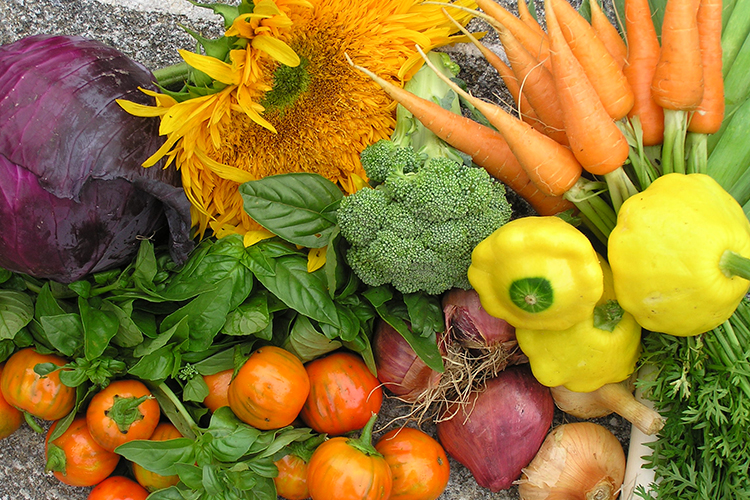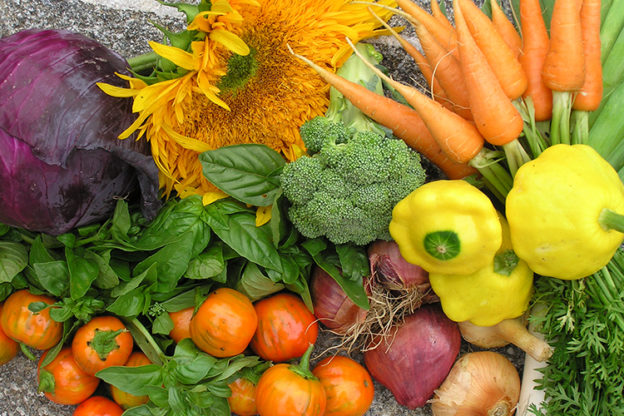The food we eat, where it comes from, and what we do with it when we are finished can have a significant impact on an individual’s carbon footprint. According to the USDA, 10% of total greenhouse gas emissions in the United States come from agriculture, but this statistic does not tell the whole story of how our food chain impacts climate change.

As our food travels from farms to our tables, greenhouse gas (GHG) emissions are released every step of the way. You can take some simple steps to help fight climate change simply by the food decisions you make.
Eat Less Meat and Dairy
According to a recent study from the Intergovernmental Panel on Climate Change, transitioning to a plant-based diet is significantly beneficial for the climate. Dietary changes could reduce global carbon dioxide emissions by eight billion tons per year and free up millions of square kilometers of land.
Animal products, such as meat and dairy, contribute to over 80% of total GHG emissions from food consumption, compared to less than 5% from vegetables, fruits or grains. Eating one vegetarian meal per week could save the equivalent of driving over 1,000 miles.
Look For Food with Fewer Food Miles Attached
Because our modern food chain is globalized, you may find apples from New Zealand and avocados from Mexico in your local supermarket. It is important to consider the carbon footprint of transportation because transportation accounts for 29% of total GHG emissions in the U.S, which is the highest out of any sector. The transportation of food is responsible for 14% of the energy used by the U.S. food system.
To reduce the miles your food travels, try shopping for locally grown and seasonal foods. Visit farmers markets and co-ops, or check labels at the grocery store and opt for domestically grown produce. Our own Drumlin Farm and Moose Hill CSA’s are a great place to start your local food journey.
Buy Less and Buy Strategically
At the end of the food system is food waste, which consumers and food distributors play a major role in. According to the EPA, 31% of the food in the United States is wasted every year, equaling 133 billion pounds of food waste. This contributes to climate change because organic waste in landfill generates methane emissions. The EPA is calling for a 50% reduction in food waste by 2030 due to the impact that food waste emissions have on climate change.
Consumers can shop more responsibly to reduce food waste. Try planning your meals ahead of time to avoid buying too much food, and keep an eye on expiration dates. You can keep your food scraps out of landfills by starting a backyard compost pile or bringing your food waste to a community compost site. See our Compost for the Climate blog post for more information.
Pledge To Be a Sustainable Food Consumer
Ready to take action for your health and the health of our planet? Pledge to become a sustainable food consumer and encourage others in your life to do the same. If you’re already vegan or a vegetarian, help create change in your school or workplace by instituting meatless Mondays and encouraging your community to institute sustainable food options at work or community events.
“I pledge to be a sustainable food consumer by reducing the amount of meat and dairy in my diet and encouraging others to do the same. Whenever possible, I will shop locally for my food and will support local farmers and producers.”


